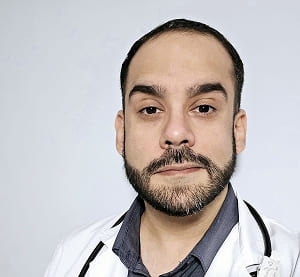

Paracetamol stadapharm 500 mg comprimidos efg


Como usar Paracetamol stadapharm 500 mg comprimidos efg
Introduction
Patient Information Leaflet: Paracetamol Stadapharm 500 mg Tablets EFG
Read this leaflet carefully before you start taking this medicine because it contains important information for you.
Follow exactly the administration instructions for the medicine contained in this leaflet or those indicated by your doctor or pharmacist.
- Keep this leaflet, as you may need to read it again.
- If you need advice or more information, consult your pharmacist.
- If you experience any side effects, consult your doctor or pharmacist, even if they are not listed in this leaflet. See section 4.
- You should consult a doctor if your fever worsens or persists after 3 days of treatment or if your pain persists after 5 days.
1. What is Paracetamol Stadapharm and what it is used for
2. What you need to know before starting to take Paracetamol Stadapharm
3. How to take Paracetamol Stadapharm
4. Possible side effects
5. Storage of Paracetamol Stadapharm
6. Contents of the pack and additional information
1. What is Paracetamol Stadapharm and what is it used for
Paracetamol Stadapharm is a pain-relieving (analgesic) and fever-reducing (antipyretic) medication.
It is used for the short-term symptomatic treatment of mild to moderate pain (lasting no more than 5 days) and/or fever (lasting no more than 3 days) in adults and adolescents aged 12 years or older (or with a body weight of 40 kg or more).
2. What you need to know before starting to use Paracetamol Stadapharm
Do not take Paracetamol Stadapharm
- if you are allergic to the active ingredient or any of the other components of this medicine (listed in section 6).
Warnings and precautions
Consult your doctor or pharmacist before starting to take Paracetamol Stadapharm:
- if you have liver problems, including liver problems caused by excessive alcohol consumption (3 or more alcoholic beverages per day);
- if you have kidney problems;
- if you have glucose-6-phosphate dehydrogenase deficiency;
- if you have anorexia, bulimia, cachexia, or chronic malnutrition;
- if you have dehydration or hypovolemia;
- if you are taking an antiepileptic medication, consult your doctor before taking this medication, as it may reduce the effectiveness and increase the hepatotoxicity of paracetamol, especially in high-dose treatments (see below in this section “Other medicines and Paracetamol Stadapharm”);
- if you have Gilbert's disease (also known as Meulengracht's disease);
- if you have heart problems, respiratory insufficiency, or anemia; in these situations, administration should be done under supervision and only for short periods;
- if you have asthma and are sensitive to acetylsalicylic acid.
During treatment with Paracetamol Stadapharm, inform your doctor immediately if:
- you have severe diseases, such as severe renal insufficiency or sepsis (when bacteria and their toxins circulate in the blood, causing damage to organs), or if you have malnutrition, chronic alcoholism, or if you are also taking flucloxacillin (an antibiotic). A severe disease called metabolic acidosis (a blood and fluid anomaly) has been reported in patients in these situations when using paracetamol at regular doses for a prolonged period or when taking paracetamol with flucloxacillin. Symptoms of metabolic acidosis may include: severe respiratory distress with deep and rapid breathing, drowsiness, feeling unwell (nausea) and vomiting.
Paracetamol may cause severe skin reactions, such as acute generalized exanthematous pustulosis (AGEP), Stevens-Johnson syndrome (SJS), and toxic epidermal necrolysis (TEN), which can be fatal. Inform patients about the symptoms of severe skin reactions and discontinue use of the medication at the first sign of skin rash or any other sign of hypersensitivity.
Do not take more paracetamol than recommended in section 3 “How to take Paracetamol Stadapharm”.
Avoid taking this medication with other medications that contain paracetamol, such as cold and flu medications, as high doses may cause liver damage. Do not use more than one medication that contains paracetamol without consulting your doctor. If you experience an overdose, seek medical attention immediately (see “If you take more Paracetamol Stadapharm than you should”).
This medication should not be used for self-medication of high fever (above 39°C), prolonged fever (more than 3 days), or recurrent fever, unless your doctor prescribes it, as these situations may require medical evaluation and treatment.
Administering high doses of paracetamol involves a high risk of severe liver damage. Medications containing paracetamol should not be taken for more than a few days or at high doses, unless your doctor advises you to.
Prolonged use of analgesics or taking high doses inappropriately may cause headaches, which should not be treated with higher doses of the medication.
Interference with analytical tests:If you are to undergo any analytical test (including blood, urine, etc.) inform your doctor that you are taking this medication, as it may alter the results. Paracetamol may alter the values of uric acid and glucose determinations.
Children and adolescents
This medication should not be used in children under 12 years of age or weighing less than 40 kg.
Other medicines Paracetamol Stadapharm
Inform your doctor or pharmacist if you are taking, have taken recently, or may need to take any other medication.
Particularly, if you are using any of the following medications, as it may be necessary to modify the dose of some of them or discontinue treatment:
Antiepileptic medications (carbamazepine, phenytoin, phenobarbital, primidone, lamotrigine): The combination of paracetamol and antiepileptic medications may cause or worsen liver damage.
Lamotrigine: The effect of lamotrigine may be reduced.
Medications for high blood pressure and heart rhythm disorders (propranolol): The combination of paracetamol and propranolol may increase its action and/or toxicity.
Medications for gout (probenecid): Causes a reduction of almost twice in the excretion of paracetamol. Consider reducing the paracetamol dose when administering a concomitant treatment with probenecid.
Medications for tuberculosis (rifampicin, isoniazid): The combination of paracetamol and rifampicin or isoniazid may cause or worsen liver damage.
Salicylamide, a medication for fever and pain: May prolong the elimination half-life (t1/2) of paracetamol.
Medications to reduce cholesterol levels in the blood (cholestyramine): Reduces the absorption of paracetamol. To avoid it, administer the paracetamol one hour before or 4 hours after the resin.
Medications to prevent nausea and vomiting (metoclopramide and domperidone): Simultaneous ingestion of medications that cause accelerated gastric emptying, e.g. metoclopramide and domperidone, increases the absorption and anticipates the onset of paracetamol action. However, it is not necessary to avoid concomitant use.
Anticoagulant medications (oral anticoagulants such as acenocoumarol, warfarin): Paracetamol may increase the effects of oral anticoagulants. Prolonged use of this medication in patients treated with oral anticoagulants should only be done under medical supervision. An increase in the effects of warfarin has been observed with high doses of paracetamol.
Diuretics (furosemide): The effects of diuretics may be reduced.
Chloramphenicol, an antibiotic medication: Simultaneous administration of paracetamol and chloramphenicol may significantly delay the excretion of chloramphenicol, increasing its plasma concentrations and causing a higher risk of toxicity.
Zidovudine (AZT), a medication used in viral diseases: Concomitant administration of paracetamol and AZT may increase the incidence of neutropenia or worsen it (reduction of white blood cell count). Paracetamol should only be taken simultaneously with AZT if your doctor recommends it.
Concomitant use of substances that induce hepatic enzymes, such as barbiturates, carbamazepine, isoniazid, rifampicin, or ethanol, should be taken into account, as they may potentiate the toxic effect of paracetamol.
Inform your doctor if this medication is taken with medications that delay gastric emptying (e.g. propantelina) or that accelerate gastric emptying (e.g. metoclopramide and domperidone).
Fluocloxacillin (antibiotic), due to a high risk of blood and fluid imbalance (metabolic acidosis with high anion gap) that must be treated urgently (see section 2).
Paracetamol Stadapharm and alcohol
Do not take alcohol during treatment with paracetamol.
Pregnancy and lactation
If you are pregnant or breastfeeding, or think you may be pregnant, consult your doctor or pharmacist before using this medication.
Pregnancy
Paracetamol may be used during pregnancy if necessary. Use the lowest possible dose that reduces pain or fever and use it for the shortest possible time. Contact your doctor or midwife if pain or fever do not decrease or if you need to take the medication more frequently.
Lactation
Paracetamol passes into breast milk. Therapeutic doses of paracetamol may be administered during lactation.
Driving and operating machinery
The influence of paracetamol on the ability to drive and operate machinery is negligible or insignificant. However, during treatment with paracetamol, you may experience mild drowsiness and dizziness.
Paracetamol Stadapharm contains sodium
This medication contains less than 23 mg of sodium (1 mmol) per tablet; it is essentially “sodium-free”.
3. How to take Paracetamol Stadapharm
Follow exactly the administration instructions of this medication as indicated by your doctor or pharmacist. In case of doubt, consult your doctor or pharmacist again.
The recommended dose in adults is 1 to 2 tablets, taken one to three times a day (a maximum of 6 tablets per day) with a large glass of water. Maximum daily dose: 3 g/day.
High doses of paracetamol should be avoided for prolonged periods of time, as it increases the risk of adverse effects, such as liver damage.
If the pain persists for more than 5 days, the fever for more than 3 days, or if the pain or fever worsen or other symptoms appear, treatment should be interrupted and your doctor consulted.
Liver diseases
Consult your doctor before taking this medication. You should take the prescribed amount of medication with a minimum interval of 8 hours between each dose. Do not take more than 2 grams of paracetamol (4 tablets) in 24 hours. In chronic alcoholics, the daily dose should not exceed 2 g.
Renal diseases
Consult your doctor before taking this medication. Take a maximum of 1 tablet. Depending on the severity of your renal disease, your doctor will tell you if you should take your medication with a minimum interval of 6 or 8 hours.
Advanced age patients
No dose adjustment is necessary.
Use in children and adolescents
- Between 12 and 15 years (or body weight greater than 40 kg): 1 tablet, taken 1 to 3 times a day with a large glass of water.
- Over 15 years (and body weight greater than 55 kg), follow the adult use recommendations.
- This medication is not recommended for children and adolescents under 12 years or body weight less than 40 kg. Ask your pharmacist.
If you takemore Paracetamol Stadapharm than you should
Contact your doctor or pharmacist immediately, even if you feel well. The appearance of severe liver damage symptoms may be delayed by 1 to 2 days. The proper control of paracetamol overdose requires immediate treatment. Despite the absence of early symptoms, patients should be taken to the hospital for immediate treatment.
The symptoms of overdose include nausea, vomiting, anorexia, pallor, general discomfort, sweating, and abdominal pain, and usually appear within the first 24 hours.
In case of overdose or accidental ingestion, go immediately to a medical center or call the Toxicological Information Service, phone 915 620 420, indicating the medication and the amount ingested.
If you forget to take Paracetamol Stadapharm
If you forget to take a dose, take another as soon as you remember, unless it is almost time for your next dose. Remember to leave at least four hours between doses. Do not take a double dose to compensate for missed doses.
If you interrupt treatment with Paracetamol Stadapharm
If you have any other doubts about the use of this medication, ask your doctor or pharmacist.
4. Possible Adverse Effects
Like all medications, this medication may produce adverse effects, although not all people may experience them.
The following adverse effects have been reported in patients treated with paracetamol:
Rare(may affect up to 1 in 1,000 people):
- Discomfort.
- Low blood pressure (hypotension).
- Increased liver enzymes.
Very Rare(may affect up to 1 in 10,000 people):
- Changes in the blood, including changes in blood cell counts (such as abnormally low levels of certain blood elements that may cause, for example, bleeding through the nose or gums) and bleeding.
- Allergic reactions (symptoms such as swelling, shortness of breath, sweating, nausea, sudden drop in blood pressure).
- Diabetic ketoacidosis.
- Icterus (yellow discoloration of the skin), liver insufficiency.
- Dermatological reactions such as allergic dermatitis, urticaria, itching, skin rash.
- Changes in urination (difficult or painful urination, decreased urine output and blood in the urine).
Unknown Frequency(cannot be estimated from available data):
- A severe disease that may make the blood more acidic (designated as metabolic acidosis) in patients with severe disease using paracetamol (see section 2).
Reporting Adverse Effects
If you experience any type of adverse effect, consult your doctororfarmacist, even if it is a possible adverse effect that does not appear in this prospectus. You can also report them directly through the Spanish System for Pharmacovigilance of Medicines for Human Use:https://www.notificaram.esBy reporting adverse effects, you can contribute to providing more information on the safety of this medication.
5. Conservation of Paracetamol Stadapharm
Keep this medication out of the sight and reach of children.
This medication does not require special storage conditions.
Do not use this medication after the expiration date that appears on the packaging after CAD. The expiration date is the last day of the month indicated.
Medications should not be disposed of through drains or in the trash. Dispose of packaging and medications you no longer need at the SIGRE collection point at the pharmacy. If in doubt, ask your pharmacist how to dispose of packaging and medications you no longer need. By doing so, you will help protect the environment.
6. Content of the container and additional information
Composition of Paracetamol Stadapharm
- The active ingredient is paracetamol. Each tablet contains 500 mg of paracetamol.
- The other components (excipients) are sodium carboxymethyl starch from potato (type A), povidone, pregelatinized cornstarch, stearic acid.
Appearance of the product and content of the container
White tablets, in capsule form, marked with “500” on one side and smooth on the other.
Paracetamol Stadapharm is available in blister packs containing 20 tablets.
Holder of the marketing authorization and responsible for manufacturing
Holder of the marketing authorization
STADA Laboratory, S.L.
Frederic Mompou, 5
08960 Sant Just Desvern (Barcelona)
Spain
Responsible for manufacturing
Qualimetrix S.A.
579 Mesogeion Avenue, Agia Paraskevi,
Athens, 15343
Greece
Last review date of this leaflet:January 2025
The detailed information of this medicine is available on the website of the Spanish Agency of Medicines and Medical Devices (AEMPS) (http://www.aemps.gob.es/).
- País de registo
- Substância ativa
- Requer receita médicaNão
- Fabricante
- Esta informação é apenas para referência e não constitui aconselhamento médico. Consulte sempre um médico antes de tomar qualquer medicamento. A Oladoctor não se responsabiliza por decisões médicas baseadas neste conteúdo.
Consulte um médico online sobre o Paracetamol stadapharm 500 mg comprimidos efg
Consulte um médico online
Tem perguntas sobre este medicamento ou sintomas? Obtenha orientação de um médico qualificado, de forma prática e segura.















